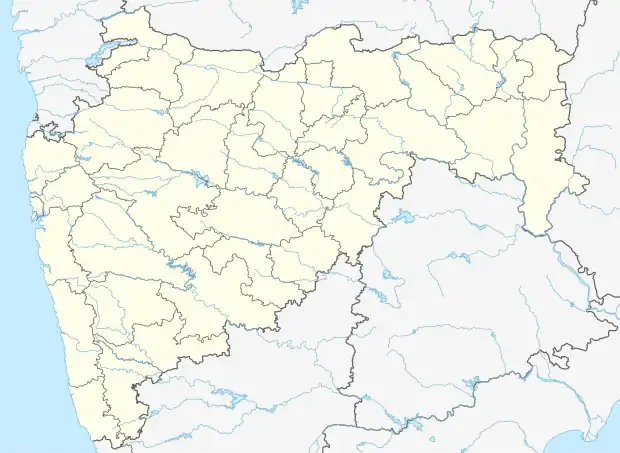| Yawal Wildlife Sanctuary | |
|---|---|
 Map of Maharashtra, India | |
| Location | Yawal Taluka, Jalgaon district, Maharashtra, India |
| Nearest city | Khargone And Burhanpur, Madhya Pradesh, India |
| Coordinates | 21°22′55″N 75°52′34″E / 21.382°N 75.876°E[1] |
| Area | 178 km2 (69 sq mi) |
The Yawal Wildlife Sanctuary is located in the Yawal Tehsil of the Jalgaon district of Maharashtra, India, at the banks of the Anner and Manjar rivers and at the border of Madhya Pradesh.[3] It is spread over an area of approximately 176 square kilometres (68 sq mi) covered by dense forest.[4]
Excessive deforestation and tree smuggling have led to significant habitat degradation starting in the early 2000s.[5] The local government, indigenous groups, and several environmental organizations have worked to reverse the damage.[6] Organizations such as Lok Sangharsh Morcha (LSM) or the People’s Struggle Front[7] have worked to ensure conservation of the region. The sanctuary is gradually recovering.[4]
Sanctuary Attractions
The Yawal Wildlife Sanctuary is home to significant natural diversity of fauna, most notably the Bengal tiger. Other wild animals include blue bulls, wild dogs, flying squirrels, and leopards.[3] Attractions include the temples of Sri Padmalaya, the Swinging Towers of Farkande, and Unapdev Hot Springs.[3]
Wildlife
Flora
Teak, Salai, Orchids[8] and Anjan trees dominate the forest. Other common plant species include Shisam, Haldu, Jamun, Tendu, Awala/Amla, bamboo and other long grasses.
Fauna
The sanctuary is home to many fauna including tigers,[9] leopards, sambar deer, chinkara, nilgai, sloth bears, jackals, foxes, wolves, wild boars, barking deer, jungle cats, palm civet, wild dogs, and flying squirrels.
Climate
Heavy rainfall is present, particularly from June to September, often reducing visitation from tourists. The most popular time to visit is during its Winter; with a temperature range of 20-28°C it is far milder than its typical scorching summers that occasionally pass 35°C.[10]
Accommodation
The Government rest house provides facilities for lodging and boarding. The British period rest house is located in Pal, which is located in the Sanctuary.
Transportation
Jalgaon Airport is the nearest airport to the sanctuary, and the nearest railway station is Bhuswal Junction.
References
- ↑ "Yawal Sanctuary". protectedplanet.net.
- "Yawal Sanctuary". protectedplanet.net.
- 1 2 3 "Places to Visit in Yawal | Tourist Places, Sightseeing Points around Yawal | MaharashtraPlanet". MaharashtraPlanet.com. Retrieved 18 May 2022.
- 1 2 "Yawal Wildlife Sanctuary, Maharastra, India | EJAtlas". Environmental Justice Atlas. Retrieved 13 July 2021.
- ↑ "The Revival Of Yawal Wildlife Sanctuary | Nature inFocus". www.natureinfocus.in. Retrieved 29 September 2023.
- ↑ "Lesson from Yawal". Frontline. 19 July 2017. Retrieved 29 September 2023.
- ↑ "Yawal Wildlife Sanctuary – Resurgence Through People's Participation". Radical Ecological Democracy. 28 October 2017. Retrieved 18 May 2022.
- ↑ "Plant Archives" (PDF).
- ↑ "Tiger sighted in Yawal sanctuary after 15 years". The Times of India. 9 January 2016. ISSN 0971-8257. Retrieved 29 September 2023.
- ↑ "Yawal Wildlife Sanctuary | Yawal National Park". MaharashtraPlanet.com. Retrieved 31 January 2023.
External links
- http://www.amazingmaharashtra.com/2013/02/yawal-wildlife-sanctuary.html
- http://www.CarDekho.com/features-stories/a-jungle-trail-drive-to-yawal-wildlife-sanctuary-in-nissan-xtrail.htm